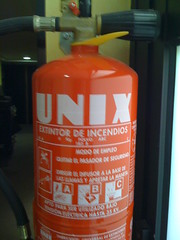

| Main index | Section 4 | Options |
Alternatively, to load the driver as a module at boot time, place the following line in loader.conf(5):
if_vxlan_load="YES"
Each vxlan interface is created at runtime using interface cloning. This is most easily done with the ifconfig(8) create command or using the cloned_interfaces variable in rc.conf(5). The interface may be removed with the ifconfig(8) destroy command.
The vxlan driver creates a pseudo Ethernet network interface that supports the usual network ioctl(2)s and is thus can be used with ifconfig(8) like any other Ethernet interface. The vxlan interface encapsulates the Ethernet frame by prepending IP/UDP and vxlan headers. Thus, the encapsulated (inner) frame is able to transmitted over a routed, Layer 3 network to the remote host.
The vxlan interface may be configured in either unicast or multicast mode. When in unicast mode, the interface creates a tunnel to a single remote host, and all traffic is transmitted to that host. When in multicast mode, the interface joins an IP multicast group, and receives packets sent to the group address, and transmits packets to either the multicast group address, or directly the remote host if there is an appropriate forwarding table entry.
When the vxlan interface is brought up, a UDP(4) socket(9) is created based on the configuration, such as the local address for unicast mode or the group address for multicast mode, and the listening (local) port number. Since multiple vxlan interfaces may be created that either use the same local address or join the same group address, and use the same port, the driver may share a socket among multiple interfaces. However, each interface within a socket must belong to a unique vxlan segment. The analogous vlan(4) configuration would be a physical interface configured as the parent device for multiple VLAN interfaces, each with a unique VLAN tag. Each vxlan segment is identified by a 24-bit value in the vxlan header called the "VXLAN Network Identifier", or VNI.
When configured with the ifconfig(8) vxlanlearn parameter, the interface dynamically creates forwarding table entries from received packets. An entry in the forwarding table maps the inner source MAC address to the outer remote IP address. During transmit, the interface attempts to lookup an entry for the encapsulated destination MAC address. If an entry is found, the IP address in the entry is used to directly transmit the encapsulated frame to the destination. Otherwise, when configured in multicast mode, the interface must flood the frame to all hosts in the group. The maximum number of entries in the table is configurable with the ifconfig(8) vxlanmaxaddr command. Stale entries in the table periodically pruned. The timeout is configurable with the ifconfig(8) vxlantimeout command. The table may be viewed with the sysctl(8) net.link.vxlan.N.ftable.dump command.
ifconfig vxlan create vxlanid 108 vxlanlocal 192.168.100.1 vxlanremote 192.168.100.2
Create a vxlan interface in multicast mode, with the local address of 192.168.10.95, and the group address of 224.0.2.6. The em0 interface will be used to transmit multicast packets.
ifconfig vxlan create vxlanid 42 vxlanlocal 192.168.10.95 vxlangroup 224.0.2.6 vxlandev em0
Once created, the vxlan interface can be configured with ifconfig(8).
The following when placed in the file /etc/rc.conf will cause a vxlan interface called "vxlan0" to be created, and will configure the interface in unicast mode.
cloned_interfaces="vxlan0" create_args_vxlan0="vxlanid 108 vxlanlocal 192.168.100.1 vxlanremote 192.168.100.2"
, , RFC 7348, Virtual eXtensible Local Area Network (VXLAN): A Framework for Overlaying Virtualized Layer 2 Networks over Layer 3 Networks, August 2014.
| VXLAN (4) | December 31, 2017 |

| Main index | Section 4 | Options |
Please direct any comments about this manual page service to Ben Bullock. Privacy policy.
